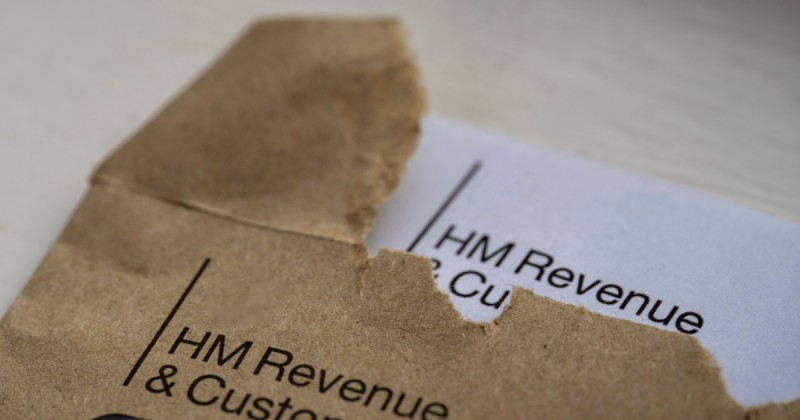
Tax codes for tech contractors -- explained
What is a tax code?
It’s a question worth asking and arguably nowhere more proactively than at the start of a new tax year – and 2024-25 begins in just a few days on April 6th 2024, writes Matt Fryer, managing director of Brookson Group, a People2.0 company.
Your tax code is used by your employer or pension provider to work out how much income tax to take from your pay (or pension).
HMRC uses a tax code to tell an employer what tax free earnings an employee is entitled to in a particular pay period, so that tax at the appropriate rates may be calculated on the balance.
How does a tax code work?
If you are resident in the United Kingdom or if you are a national of the UK or an EEA country, you are entitled to a personal allowance - for 2023/24 (ending on April 5th), this is £12,570. The same allowance will be in place for 2024/25 (commencing on April 6th).
If you have employment earnings, you can be paid up to the amount of your personal allowances without paying tax -- this is the starting point for establishing your tax code.
Your personal allowance is apportioned over the tax year, so for each pay period (whether weekly, or monthly) an element of pay up to the personal allowance, is not subject to tax.
Generally, income tax is cumulative in nature.
Quick example
So, for example, if you started work on September 1st 2023 having not worked at all since the start of the current tax year (April 6th 2023), in September you will be allowed £6,288 (6 months x £1,048) of pay free of tax, to use against that month’s wages.
The tax-free amount increases by £1,048 each month thereafter and it is only when you finally earn more than the tax-free limit, that you will start to pay tax.
The numbers and letters of a tax code...
Your standard tax code is derived by taking off the last number and by adding on a letter.
For example, in 2023/24, someone whose tax-free amount is just the personal allowance of £12,570, will have a tax code of 1257L. This code means that as an employee, you are entitled to £1,048 tax free pay per month (or £242 per week).
However, the basic tax code “number” can just be the starting point as tax codes can be reduced to a lower amount that you can earn before you pay tax (for example, if you have a taxable benefit, such as a company car).
Similarly, amounts can be added to your personal allowance which would increase the amount you can earn before you pay tax, such as employment expenses.
Why do limited company tech contractors need to be aware of their tax code?
And as a techie, you thought you had enough coding in your life!
Well, limited company contractors (who are both directors and employees of their own company) will normally set up a PAYE scheme, so a tax code will be applied against any salary they process in their company.
Generally, the optimal route for profit-extraction is to set a salary equal to the personal allowance and withdraw the residual amount as dividends. The salary can be paid without deduction of tax -- and it is fully deductible against corporation tax.
As a limited company, directors have more flexibility with any income they take from their company and would normally account for any under/overpayment of tax on their self-assessment tax return they file with HMRC.
What are the implications of tax codes as a contractor who uses an umbrella company?
Umbrella company contractors are also employed, but by their umbrella provider.
The umbrella company will run the PAYE scheme and deduct the correct amount of tax from the contractor’s salary, based on the tax code advised to them by HMRC -- so they are “fixed” in nature.
For those employees whose sole income is from their umbrella income, there is not a requirement to complete a self-assessment return, unless their income is above £100,000.
So any under/overpayments are normally notified on a P800 tax calculation letter.
When you begin employment, you will be asked to complete a starter checklist, and it is important that this is completed accurately, as different codes are applied to your circumstances, otherwise you may end up with additional tax to pay.
Examples of standard tax code letters
Examples of standard tax code letters and their significance are detailed below:
L -- Standard tax code – You are entitled to a personal tax allowance or tax-free amount.
0T -- Temporary tax code – This is typically used when a new employer does not have any tax code information (either from a P45 or a completed starter checklist) from you. Therefore, it is important that this is updated as soon as possible.
BR -- All income is taxed at the basic rate (20%) –this typically arises where you may have a second job, where the first job has used up the standard allowance and where the total income is below £50,270. If you consider that your total income is above £50,270, then advising HMRC of this will ensure you do not incur an underpayment of tax.
D0 -- Tax is deducted from all income at the higher rate (40%), and no personal tax allowance is applied – this is typical for a second job, where the total income is above £50,270.
W1/M1 -- Sometimes you may see tax codes 1257L W1 or 1257L M1.
Either is an emergency tax code and means that only one week’s or month’s proportion of the allowances due for the tax year is given against each week’s/month’s pay.
The pay period is dealt with in isolation and not on a cumulative basis. If you see an ‘X’ rather than a W/M, this indicates that your pay period is not weekly/monthly -- you could be paid ‘four-weekly’ for example. In these circumstances, it is important to advise HMRC of your historic income in that tax year as your tax will be incorrect indefinitely.
K -- Tax codes with the letter K refer to tax owed for company benefits, pension income or tax owed from previous years exceeding the personal tax allowance. K500, for example, means that your income plus £5,000 is being taxed.
If you are a Scottish taxpayer or Welsh taxpayer you will have an ‘S’ or ‘C’ suffix, respectively.
How do I correct my tax code?
During the year, any changes to your tax code number will be notified to you on form P6 (‘tax code notice’).
This will be sent by post or can be viewed online if you use an online personal tax account.
You can also contact HMRC directly on 0300 200 3300.
Finally remember it’s code, but not as most techies will probably know it!
Busy contractors in the IT sector will invariably feel there’s enough coding in their professional lives, but the key takeaway with coding of the HMRC-kind is to always check the configuration if you are notified of any changes, and to speak to HMRC or your accountancy adviser if you are unsure. Such a quick coding chat could potentially head off a nasty tax bill in tax year 2024/25 and even beyond!




Comment
Log in or create your account to react to the article.